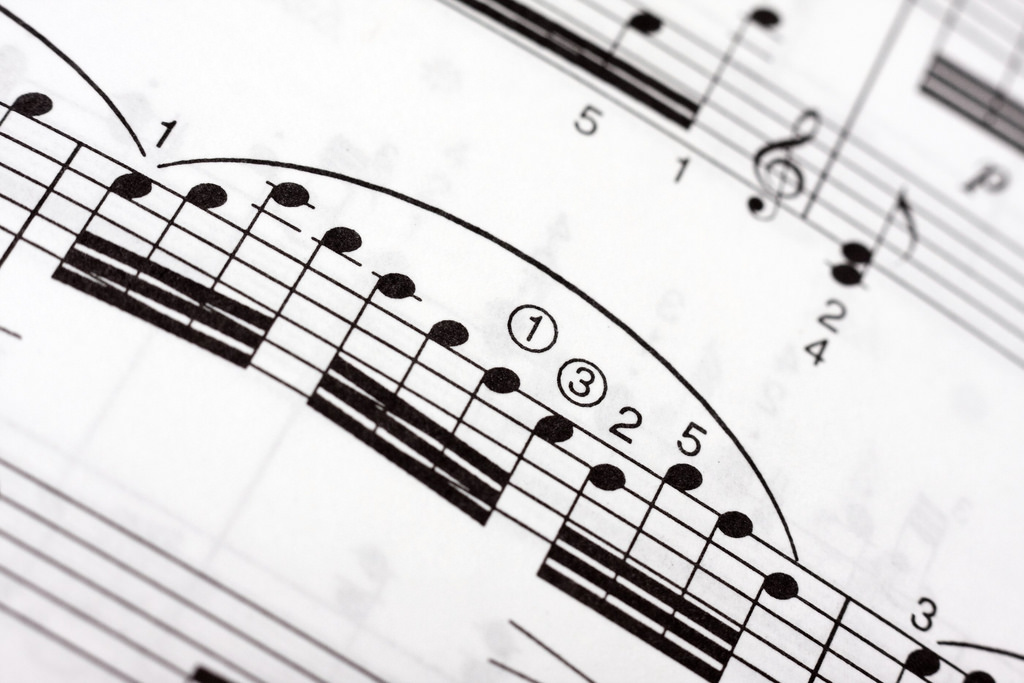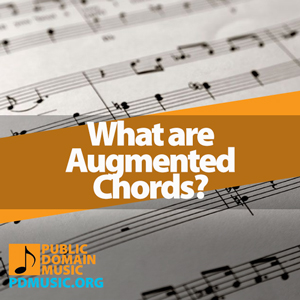Welcome fellow music enthusiasts, to the wonderfully wacky world of diminished, augmented, and extended chords! These seemingly simple musical entities are anything but straightforward – they’re like the Rubik’s cubes of the music world, constantly twisting and turning to baffle and bewilder even the most seasoned musicians. So buckle up and get ready to dive into the bizarre and bewildering world of musical madness that is diminished, augmented, and extended chords. Grab your earplugs, folks, because things are about to get seriously twisted! Fundamentals of Diminished Chords”>
Fundamentals of Diminished Chords”>
Contents
- 1 Exploring the Fundamentals of Diminished Chords
- 2 Understanding Augmented Chords and Their Harmonic Function
- 3 Extended Chords: Expanding Beyond the Basic Triad
- 4 Applications of Diminished and Augmented Chords in Composition
- 5 Navigating the Use of Extended Chords for Textural Depth
- 6 Distinguishing Characteristics of Diminished, Augmented, and Extended Chords in Various Musical Genres
- 7 Practical Exercises for Mastering Diminished, Augmented, and Extended Chords
- 8 FAQs
- 9 In conclusion, what’s the deal with these fancy chords?
Exploring the Fundamentals of Diminished Chords
Let’s delve into the mysterious world of diminished chords, the black sheep of the chord family.
Picture a regular chord as a happy family of notes, living in harmony and spreading joy wherever they go. Now imagine a diminished chord as that one weird cousin that always shows up uninvited, throws everyone off balance, and leaves a sense of unease in the air.
But fear not, brave adventurer! By understanding the fundamentals of diminished chords, you can tame this unruly beast and add a touch of suspense and intrigue to your musical compositions.
Remember, a diminished chord is like a spicy seasoning – use it sparingly to add a dash of flavor to your music, but don’t overdo it unless you want to leave your listeners feeling like they’ve just stumbled into a haunted house.
Understanding Augmented Chords and Their Harmonic Function
Augmented chords are like the Frankenstein monsters of the music world, pieced together from intervals that don’t quite fit. They’re like the weird uncle at family gatherings – you’re not quite sure what to do with them, but they definitely add some unexpected spice to the mix.
So, what exactly is an augmented chord? Well, imagine taking a normal major chord and giving it a little twist. Instead of the typical 1-3-5 formula (root, major third, perfect fifth), you swap out that fifth for a sharp fifth. It’s like replacing your usual cup of coffee with a double shot of espresso – things are about to get lively.
But how do augmented chords fit into the grand scheme of music harmony? Think of them as the rebels of the chord family, constantly shaking things up and adding some tension to your chord progressions. They love to lead you down unexpected paths, making your ears perk up and wonder where they’re taking you next.
Whether you love them or hate them, augmented chords are here to stay. Embrace their quirky nature and let them add some zing to your musical creations. Who knows, maybe they’ll become your new favorite musical sidekick, injecting some much-needed excitement into your harmonic adventures.
 Extended Chords: Expanding Beyond the Basic Triad”>
Extended Chords: Expanding Beyond the Basic Triad”>
Extended Chords: Expanding Beyond the Basic Triad
If you’re tired of playing the same old basic triads and want to spice up your chord progressions, then it’s time to delve into the world of extended chords. These bad boys go beyond the traditional three-note triads and add some serious flavor to your musical concoctions.
Imagine your basic triad as the plain cheese pizza of chords – it’s good, but it could definitely use some toppings. Extended chords are like adding pepperoni, mushrooms, and extra cheese to your pizza, taking it from ordinary to extraordinary.
With extended chords, you can create rich, complex sounds that will dazzle your audience and elevate your playing to a whole new level. Say goodbye to boring chord progressions and hello to a symphony of sonic goodness.
So, grab your instrument, experiment with some seventh, ninth, and eleventh chords, and let your creativity run wild. Who knows, you may just discover a whole new world of musical possibilities that will blow your mind!
 Composition“>
Composition“>
Applications of Diminished and Augmented Chords in Composition
Diminished and augmented chords may sound a bit fancy and sophisticated, but they’re actually quite versatile in composition. Here’s how you can spice up your compositions with these quirky chords:
One fun way to use diminished chords is to create tension and suspense in your music. These chords have a dissonant sound that can add an edgy, mysterious vibe to your compositions. You can use them to build up anticipation before resolving to a more stable chord, keeping your listeners on the edge of their seats.
On the flip side, augmented chords can bring a sense of brightness and energy to your compositions. Their unique sound can add a touch of whimsy or playfulness to your music. Use augmented chords to create interesting harmonies or to add a surprising twist to your melodies.
Don’t be afraid to experiment with these unconventional chords in your compositions. Whether you’re aiming for a moody and dramatic sound or a quirky and playful vibe, diminished and augmented chords can help you achieve just the right atmosphere for your music.

Ready to take your chord progressions to the next level? Extended chords are a great way to add some extra flavor and textural depth to your music. But navigating through all those notes can be a bit daunting, so let’s break it down!
First things first, let’s talk about what exactly extended chords are. These bad boys go beyond the basic triads and add in extra tones to create more color and complexity. Think of them as the extra sprinkles on top of your musical sundae.
When using extended chords, it’s important to remember that less is often more. You don’t want to drown out your main melody with a plethora of added notes. Instead, think of these extended chords as accents that enhance the overall vibe of your composition.
So next time you’re looking to spice up your chord progressions, don’t be afraid to throw in some extended chords for that extra pizzazz. Your music will thank you for it, and who knows, you might just discover a new favorite chord along the way!
Distinguishing Characteristics of Diminished, Augmented, and Extended Chords in Various Musical Genres
Diminished chords are like the black sheep of the chord family – they’re moody, dissonant, and always adding a hint of suspense to a musical piece. You can usually find them lurking in the shadows of jazz and classical music, creating an air of mystery and intrigue.
On the other hand, augmented chords are the drama queens of the chord world. They’re flashy, bold, and always looking to steal the spotlight. These attention-seeking chords can be found strutting their stuff in genres like musical theater and experimental music, adding a touch of grandeur and extravagance to any composition.
Extended chords, on the other hand, are like the chill, laid-back cousin of the chord family. They’re cool, relaxed, and always down for a good time. You can spot them hanging out in genres like R&B and neo-soul, adding a smooth, jazzy vibe to any musical piece. Extended chords are all about creating a sense of depth and richness in a composition, making them the go-to choice for musicians looking to add some soulful flavor to their music.
Practical Exercises for Mastering Diminished, Augmented, and Extended Chords
Ready to challenge yourself and become a chord master? Here are some fun and practical exercises to help you conquer diminished, augmented, and extended chords!
First up, let’s tackle diminished chords. These complex little beasts can be a bit tricky to wrap your fingers around, but with practice, you’ll have them down pat in no time. Remember, a diminished chord is made up of a root note, a minor third, and a diminished fifth. Start by practicing the following diminished chords in different keys:
- Cdim (C-D#-F#)
- F#dim (F#-A-C)
- G#dim (G#-B-D)
Next, let’s move on to augmented chords. These bad boys are like diminished chords on steroids – they have a root note, a major third, and an augmented fifth. To master augmented chords, try playing the following examples:
- Eaug (E-G#-B#)
- Daug (D-F#-A#)
- Caug (C-E-G#)
Finally, let’s not forget about extended chords. These chords add some extra spice to your playing by including the seventh, ninth, eleventh, and thirteenth notes. Practice playing the following extended chords in different inversions and voicings to really challenge yourself:
- G9 (G-B-D-F-A)
- Dm7 (D-F-A-C-E)
- C13 (C-E-G-Bb-D-A)
FAQs
What exactly are diminished, augmented, and extended chords?
Well, think of them as the spicy, exotic cousins of your typical major and minor chords. Diminished chords sound like they’re straight out of a horror movie, augmented chords are all about that extra kick, and extended chords are like a jazzy, sophisticated version of your regular chords.
How are diminished chords different from regular chords?
Diminished chords are like the black sheep of the chord family. They’re basically minor chords that have been kicked down a notch, with that extra bit of tension that makes you feel like something ominous is lurking around the corner. They’re perfect for adding some suspense and drama to your music.
What’s the deal with augmented chords?
Augmented chords are like the divas of the chord world. They’re all about being extra and demanding attention. Augmented chords have that unique sound that can make your music really stand out, like a splash of hot sauce in a bland dish.
How can extended chords spice up my music?
Extended chords are like adding fancy accessories to your outfit – they take your music to the next level. By adding extra notes beyond the basic triad, extended chords create a richer, more complex sound that can make your music sound more sophisticated and interesting. Plus, they’re a great way to show off your musical chops.
In conclusion, what’s the deal with these fancy chords?
Well, it’s like a musical mystery that’s just waiting to be unraveled. Diminished chords are like the black sheep of the chord family – they bring a bit of tension and unpredictability to the table. And then there’s augmented chords, which are like the quirky cousin who always adds a bit of spice to the mix.
And let’s not forget about extended chords, the overachievers who just can’t settle for the basic triads. They’re always reaching for more, always pushing the boundaries of harmony.
So next time you’re jamming out on your guitar or tickling the ivories on the piano, don’t be afraid to experiment with these intricate chords. Who knows, you might just stumble upon a musical masterpiece in the making!
One thing’s for sure – when it comes to music, there’s always something new to discover, especially when it comes to the complexities of diminished, augmented, and extended chords.



